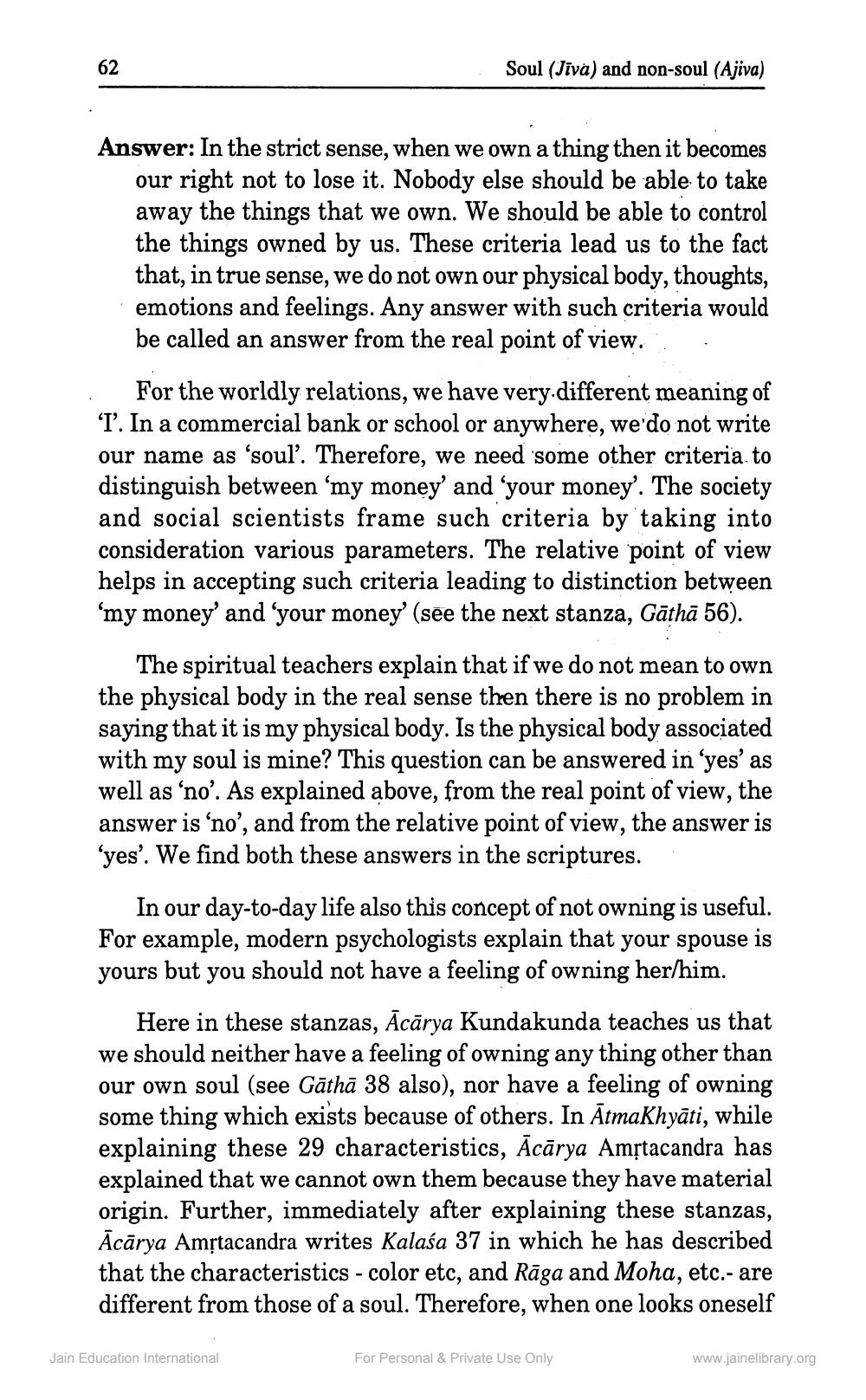________________
62
Soul (Jiva) and non-soul (Ajiva)
Answer: In the strict sense, when we own a thing then it becomes
our right not to lose it. Nobody else should be able to take away the things that we own. We should be able to control the things owned by us. These criteria lead us to the fact that, in true sense, we do not own our physical body, thoughts, emotions and feelings. Any answer with such criteria would be called an answer from the real point of view.. .
For the worldly relations, we have very different meaning of 'I'. In a commercial bank or school or anywhere, we do not write our name as 'soul. Therefore, we need some other criteria. to distinguish between 'my money' and 'your money'. The society and social scientists frame such criteria by taking into consideration various parameters. The relative point of view helps in accepting such criteria leading to distinction between 'my money' and 'your money' (see the next stanza, Gāthā 56).
The spiritual teachers explain that if we do not mean to own the physical body in the real sense then there is no problem in saying that it is my physical body. Is the physical body associated with my soul is mine? This question can be answered in 'yes' as well as 'no'. As explained above, from the real point of view, the answer is 'no', and from the relative point of view, the answer is 'yes'. We find both these answers in the scriptures.
In our day-to-day life also this concept of not owning is useful. For example, modern psychologists explain that your spouse is yours but you should not have a feeling of owning her/him.
Here in these stanzas, Ācārya Kundakunda teaches us that we should neither have a feeling of owning any thing other than our own soul (see Gāthā 38 also), nor have a feeling of owning some thing which exists because of others. In Ātmakhyāti, while explaining these 29 characteristics, Ācārya Amộtacandra has explained that we cannot own them because they have material origin. Further, immediately after explaining these stanzas, Ācārya Amộtacandra writes Kalasa 37 in which he has described that the characteristics - color etc, and Rāga and Moha, etc.- are different from those of a soul. Therefore, when one looks oneself
Jain Education International
For Personal & Private Use Only
www.jainelibrary.org




